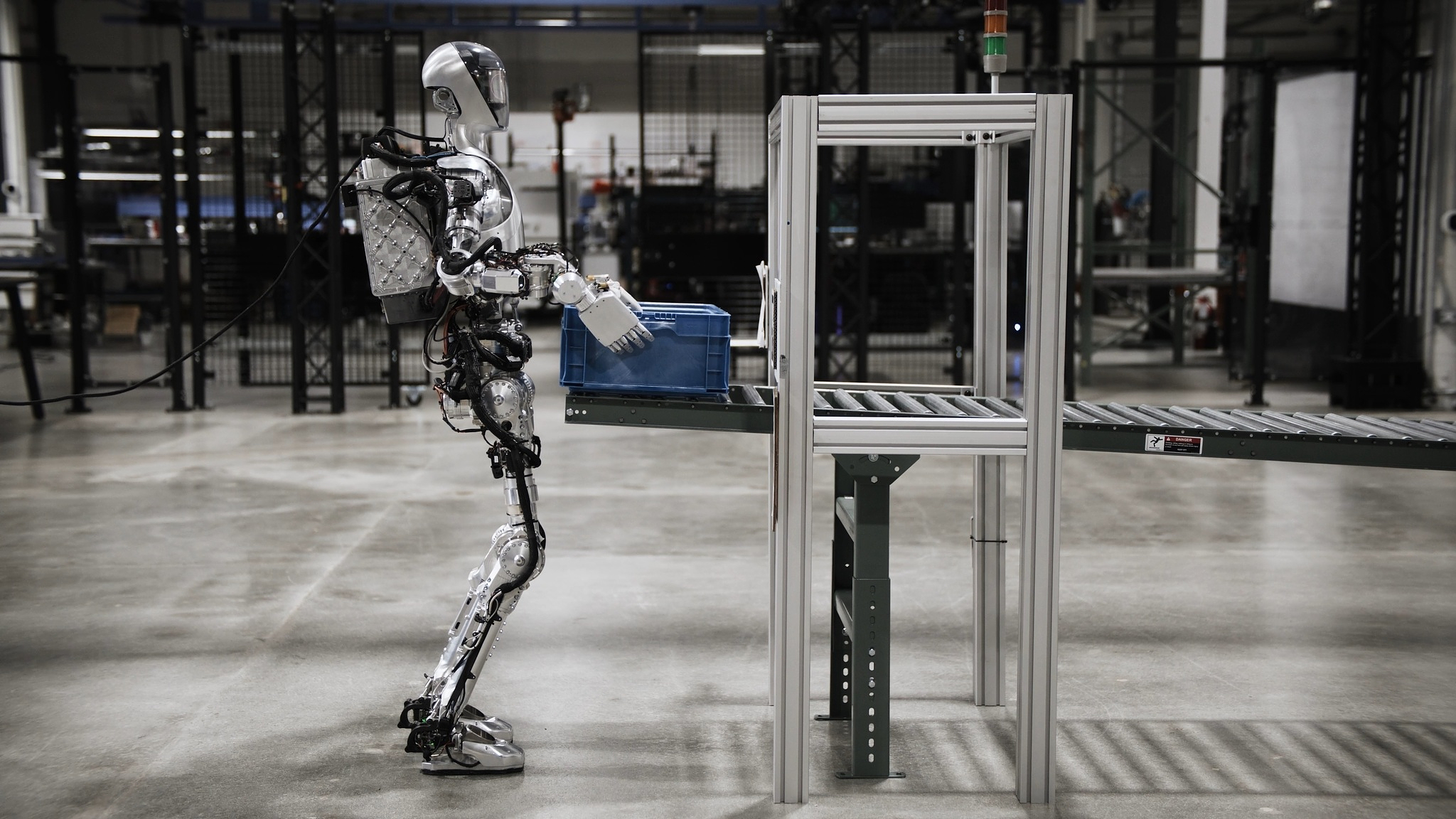Humanoid robots have captured our imagination throughout history. Science fiction has transported us to idyllic worlds where we live in harmony with friendly robots and to dystopian futures with droids that rebel against their own creators. Beyond science fiction, the industry has been working on the development of humanoid robots for decades.
In recent years, we have seen prototypes, proofs of concept and short-lived commercial attempts. Now, advances in robotics and artificial intelligence open the door to a leap in the robotics revolution. In fact, the industry has embarked on a race to commercialize general-purpose autonomous bipedal humanoid robots that can interact with humans safely.
In a first phase, they will be able to work alongside us in various industries and, in the future, become home assistants. "For decades, we have longed for this type of robots, but there was not sufficiently advanced technology, they were not economically viable and there was no clear utility," summarizes Pablo Medrano, CEO of Casual Robots, a Spanish robotics rental and consulting company.
When technology giants take positions, something is moving. Last week, Microsoft, OpenAI, Nvidia, Amazon and Jeff Bezos entered the $2.6 billion startup Figure AI to accelerate their plans to create humanoid robots. For his part, Elon Musk has shown his ambitions with Optimus, a model in the development phase that he wants to turn into a line of business for the car manufacturer Tesla.
Meanwhile, the Norwegian start-up 1X has recently raised $100 million in a round led by EQT Ventures, in which Samsung participates, to accelerate the commercialization plans of its NEO robot. For its part, the American company Apptronik presented Apollo last year, a droid designed to work alongside humans. The Canadian Sanctuary is developing Phoenix, equipped with an artificial intelligence control system, and the Spanish PAL Robotics has been working in this field for two decades.
China, meanwhile, hopes to mass produce these types of robots in 2025, as recently revealed by the Chinese Ministry of Industry and Information Technology.
This great activity is possible because in recent years significant advances have been achieved in areas such as interaction with humans, locomotion, artificial vision, movement control, object manipulation and artificial intelligence. "There has been a technological leap in the post-pandemic years," certifies Carlos Balaguer, professor of Robotics at the Carlos III University of Madrid, who has developed his own humanoid, Teo, for research. "We will not see these types of robots on the streets in the short term, but we will see them in controlled environments," he says.
Robotics companies envision their use in logistics centers, where they will be able to perform tasks such as unloading trucks, moving boxes and preparing orders. Although they may seem like simple tasks, getting a humanoid to open and close a box dexterously is a complex challenge, according to Balaguer.
Humanoid bipeds are also expected to work in industrial plants and perform retail jobs. "Bipedal humanoids adapt 100% to a plant. A robot with wheels can be more stable and robust, but its adoption requires enabling existing spaces," explains Alexandre Saldes, Director of Innovation at PAL Robotics.
For example, Sanctuary AI has tested its robot in a store of the Canadian chain CTC. For a week, he carried out tasks of picking and packing merchandise, cleaning, labeling and folding. Amazon, for its part, has tested Digit from Agility Robotics - a company in which it has invested - to move empty containers. Meanwhile, BMW will test the first Figures at its South Carolina factory.
These companies argue that humanoids will free us from boring and repetitive tasks, as well as dangerous jobs. For example, they may work in mining, rescue work, nuclear reactor maintenance or chemical product manufacturing. Figure AI argues that these robots will fill the lack of labor in the United States in industries such as logistics.
The big question is when the leap will be made from the laboratory to mass production. Goldman Sachs predicts that by 2030, 250,000 humanoids will be sold, mainly for industrial use, a figure that would exceed one million units in just over a decade; predictions that Professor Balaguer considers unrealistic if the scientist's concept of a humanoid robot is taken into account. The investment bank estimates that global business volume will reach $38 billion in 2035.
Price remains the biggest obstacle. Although the cost of components has decreased, it is still high. Elon Musk draws a hypothetical scenario with robots that can cost "like a utility vehicle." "Not so long ago, they didn't go below one million euros," says Medrano. According to Goldman Sachs, the cost of manufacturing a humanoid robot is in a range of between $50,000 and $250,000 (for the most advanced versions), 40% less than a year ago.
From a technological point of view, researchers work in various fields. Goldman Sachs points out that, thanks to artificial intelligence and machine learning, robots can train themselves, which accelerates their development and allows them to perform more tasks and adapt to new situations.
Professor Carlos Balaguer indicates other areas of work in the robotics industry. For example, what is known as soft robotics; that is, creating humanoids with muscles and artificial skin for a more natural and safe interaction with humans. The Carlos III laboratory is developing robots with soft necks that can move in all directions. Work is also being done to reduce complexity and weight, for example by replacing electric motors with artificial muscles.
Finally, in the field of interaction with humans, a rising trend is the implementation of psychological perception so that the robot recognizes the emotional state of the human and can empathize with him.

 Poland, big winner of European enlargement
Poland, big winner of European enlargement In Israel, step-by-step negotiations for a ceasefire in the Gaza Strip
In Israel, step-by-step negotiations for a ceasefire in the Gaza Strip BBVA ADRs fall almost 2% on Wall Street
BBVA ADRs fall almost 2% on Wall Street Ukraine has lost 10 million inhabitants since 2001... and could lose as many by 2050
Ukraine has lost 10 million inhabitants since 2001... and could lose as many by 2050 Sánchez cancels his agenda and considers resigning: "I need to stop and reflect"
Sánchez cancels his agenda and considers resigning: "I need to stop and reflect" The Federal Committee of the PSOE interrupts the event to take to the streets with the militants
The Federal Committee of the PSOE interrupts the event to take to the streets with the militants Repsol: "We want to lead generative AI to guarantee its benefits and avoid risks"
Repsol: "We want to lead generative AI to guarantee its benefits and avoid risks" Osteoarthritis: an innovation to improve its management
Osteoarthritis: an innovation to improve its management The Fed maintains its rates in the face of “lack of progress” on the inflation front
The Fed maintains its rates in the face of “lack of progress” on the inflation front Microsoft announces investment of 2.05 billion euros in AI and cloud in Malaysia
Microsoft announces investment of 2.05 billion euros in AI and cloud in Malaysia Ukraine gets a spokesperson generated by artificial intelligence
Ukraine gets a spokesperson generated by artificial intelligence The French will take advantage of the May bridges to explore France
The French will take advantage of the May bridges to explore France Actor Laurent Lafitte leaves the Comédie-Française
Actor Laurent Lafitte leaves the Comédie-Française Death of Paul Auster: Actes Sud says he is “lucky” to have been his publisher in France
Death of Paul Auster: Actes Sud says he is “lucky” to have been his publisher in France Lang Lang, the most French of Chinese pianists
Lang Lang, the most French of Chinese pianists Author of the “New York Trilogy”, American novelist Paul Auster has died at the age of 77
Author of the “New York Trilogy”, American novelist Paul Auster has died at the age of 77 Omoda 7, another Chinese car that could be manufactured in Spain
Omoda 7, another Chinese car that could be manufactured in Spain BYD chooses CA Auto Bank as financial partner in Spain
BYD chooses CA Auto Bank as financial partner in Spain Tesla and Baidu sign key agreement to boost development of autonomous driving
Tesla and Baidu sign key agreement to boost development of autonomous driving Skoda Kodiaq 2024: a 'beast' plug-in hybrid SUV
Skoda Kodiaq 2024: a 'beast' plug-in hybrid SUV The home mortgage firm rises 3.8% in February and the average interest moderates to 3.33%
The home mortgage firm rises 3.8% in February and the average interest moderates to 3.33% This is how housing prices have changed in Spain in the last decade
This is how housing prices have changed in Spain in the last decade The home mortgage firm drops 10% in January and interest soars to 3.46%
The home mortgage firm drops 10% in January and interest soars to 3.46% The jewel of the Rocío de Nagüeles urbanization: a dream villa in Marbella
The jewel of the Rocío de Nagüeles urbanization: a dream villa in Marbella Europeans: a senior official on the National Rally list
Europeans: a senior official on the National Rally list Blockade of Sciences Po: the right denounces a “drift”, the government charges the rebels
Blockade of Sciences Po: the right denounces a “drift”, the government charges the rebels Even on a mission for NATO, the Charles-de-Gaulle remains under French control, Lecornu responds to Mélenchon
Even on a mission for NATO, the Charles-de-Gaulle remains under French control, Lecornu responds to Mélenchon “Deadly Europe”, “economic decline”, immigration… What to remember from Emmanuel Macron’s speech at the Sorbonne
“Deadly Europe”, “economic decline”, immigration… What to remember from Emmanuel Macron’s speech at the Sorbonne These French cities that will boycott the World Cup in Qatar
These French cities that will boycott the World Cup in Qatar NBA: Boston will see the semi-finals, the Clippers one step away from elimination
NBA: Boston will see the semi-finals, the Clippers one step away from elimination Paris 2024 Olympic Games: “It would have been an incredible honor”, Rudy Gobert will ultimately not be flag bearer
Paris 2024 Olympic Games: “It would have been an incredible honor”, Rudy Gobert will ultimately not be flag bearer Champions League: Dortmund coach praises Jadon Sancho, author of a great performance against PSG
Champions League: Dortmund coach praises Jadon Sancho, author of a great performance against PSG Football: a goal from Georges Mikautadze broadcast...in Times Square
Football: a goal from Georges Mikautadze broadcast...in Times Square


















